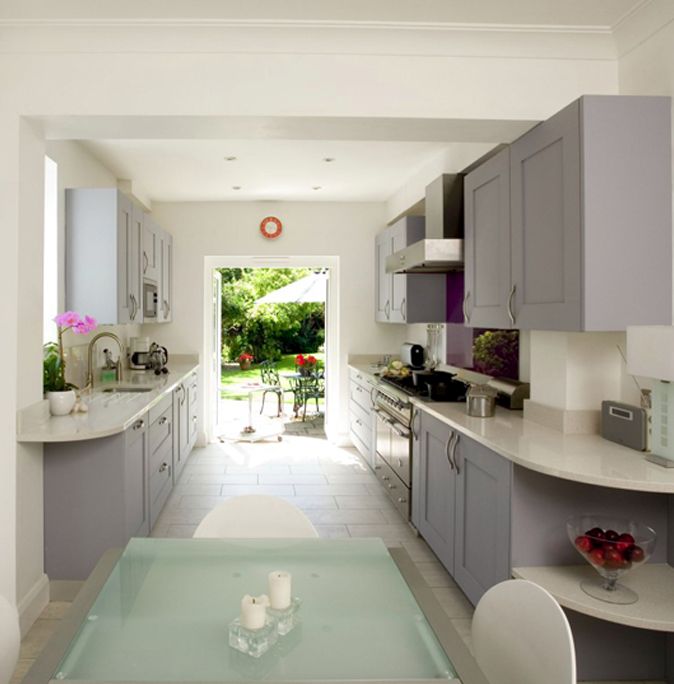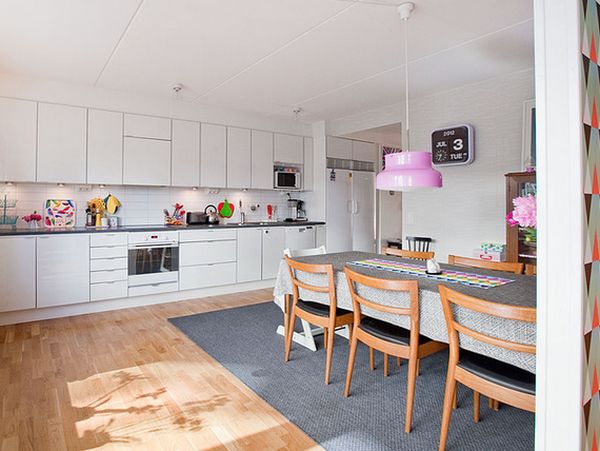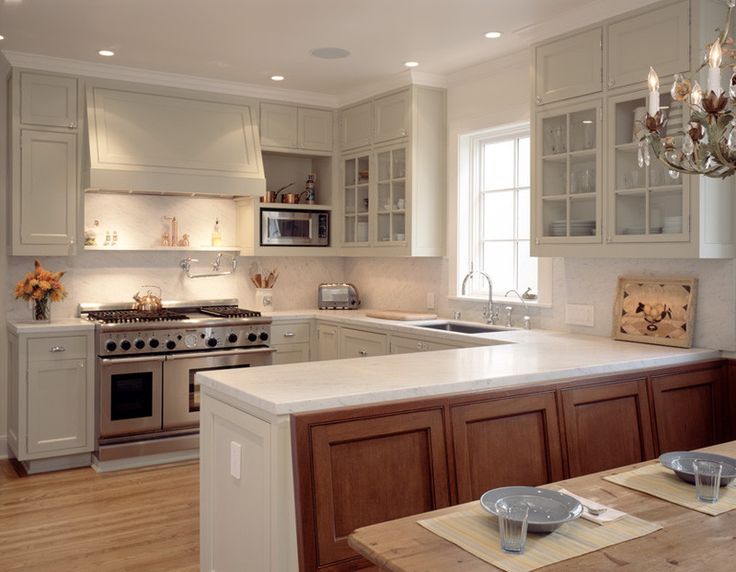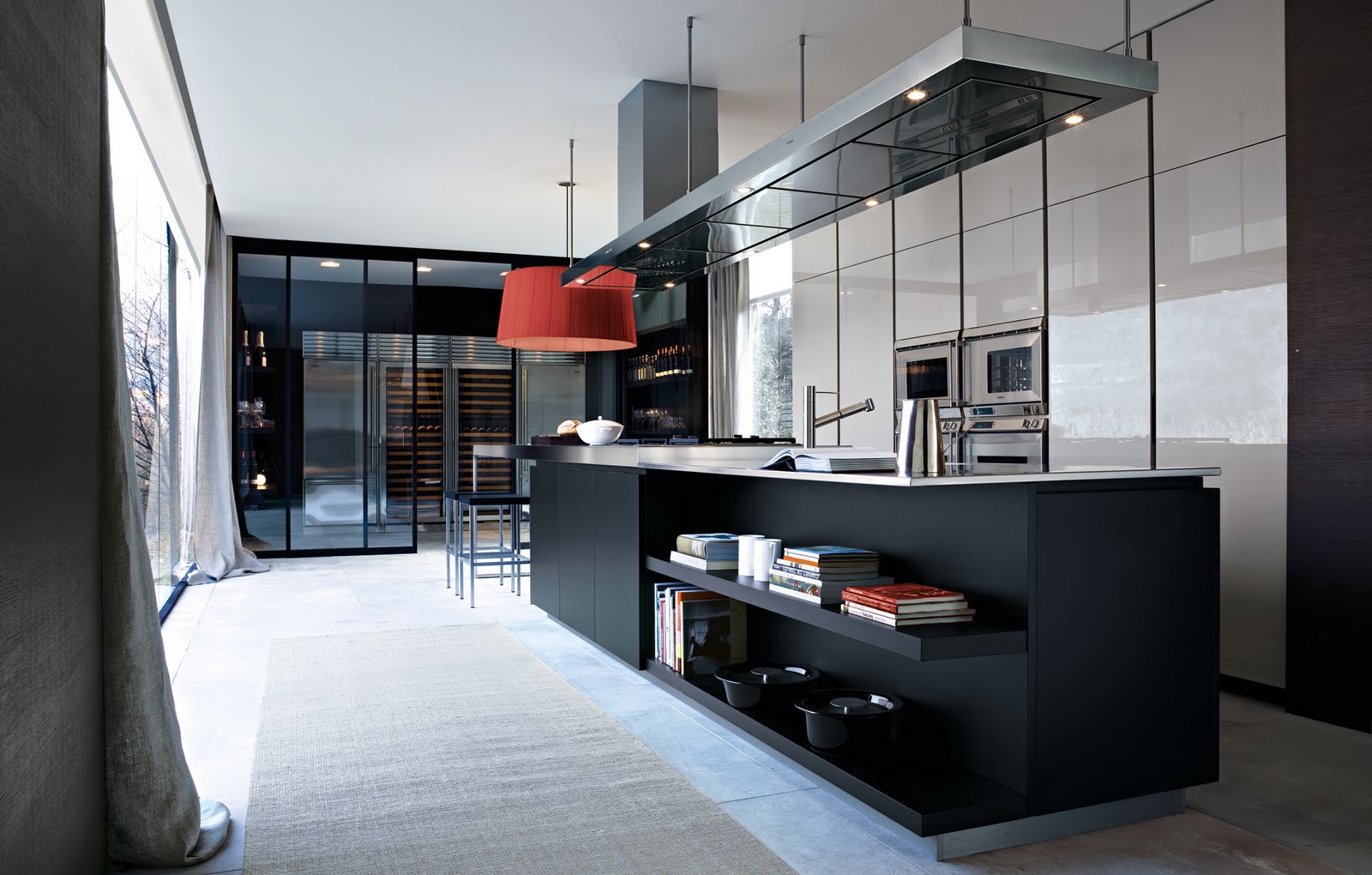Looking for some kitchen layout ideas? Got a small kitchen and need to maximize every inch? Got a huge kitchen and need to optimize the expansive layout? Got a tired old kitchen that you need a fresh kitchen layout design? Then this article is for you.
The kitchen is the heart of the home. You want it to have the best possible layout and functionality it can. Below, we’ll discuss several of the most common kitchen layouts and their pros and cons. Consider this article as a research supplement to your kitchen layout planner to be sure you’re designing the best possible space for you, your family, and your lifestyle.
KITCHEN WORK TRIANGLE: FRIDGE, RANGE, & SINK.

Work Triangle Description: This is the layout many of us grew up hearing about as the holy grail of all kitchen layouts. It’s a classic, actually. In essence, the ideal work triangle layout is to have the primary and most-used appliances (e.g., fridge, range, sink) at corner points of a triangular workspace for maximum efficiency. Basically, you want to minimize the time and effort spent moving between said appliances.
Work Triangle Pros: Pivoting from fridge to sink to range is seamless and super efficient. That’s the whole idea behind this concept. It’s a classic, tried-and-true kitchen layout that comes into play within all other kitchen layouts.
Work Triangle Cons: The work triangle can become tricky business, perhaps even counterintuitive, in larger kitchens and those with islands. It’s important to see the forest through the trees in planning this type of kitchen layout.
Work Triangle Tips: Keep the work triangle fairly tight, regardless of the size of your kitchen, so as to preserve some energy for dining and interacting with loved ones over the food when it’s done.
SINGLE WALL KITCHEN.
Single Wall Kitchen Description: A kitchen in which all appliances, cabinets, and counter spaces are positioned along one wall. Single wall kitchens are usually found in small homes, because they are small yet efficient spaces that can be disguised as needed in a small space (read: studio apartment or similar).
Single Wall Kitchen Pros: Ingredients, appliances, and food prep space all tend to be within easy reach in a single wall kitchen layout.
Single Wall Kitchen Cons: Due to their small size and the traditional appliances requirements, single wall kitchens tend to be very limited in counter space. Food prep and multiple cooks pose a challenge.
Single Wall Kitchen Tips: Typically, the sink sits in between the range and fridge in a single wall kitchen, for easy cleanup (not to mention aesthetic balance). Consider opting for compact or custom (smaller) appliances to maximize the limited space. Also, throw in an island opposite the single cabineted wall for a great storage, efficiency, and people-gathering option.
GALLEY KITCHEN.

Galley Kitchen Description: A galley kitchen, also known as a corridor-style kitchen, is essentially a kitchen in the shape of a hallway…and is one of the most efficient kitchen layouts for cooking. The galley kitchen is long and narrow, with two straight runs on either side. (These can be two walls, or they can be one cabineted wall and an island that creates the second galley “wall.”)

Galley Kitchen Pros: The galley kitchen is a highly efficient kitchen layout, maximizing a typically small, cramped space with alternating appliances, cabinetry, and counter space. It’s so popular in its efficiency, in fact, that the galley kitchen is the primary kitchen layout design for most restaurants.
Galley Kitchen Cons: In galley kitchens, it’s preferable to have the sink and range on opposite sides, for greater efficiency; however, this kitchen layout tends to disrupt the flow. Also, there is no inherent space for dining or “hanging out” with family and friends, as is provided in many other kitchen layout designs.
Galley Kitchen Tips: Keep both ends of the galley kitchen open to bring in more natural light and create connections to the rest of the house. Another tip is to put the sink and cooktop on one side of the galley to keep the messes contained.
L-SHAPED KITCHEN.
L-Shaped Kitchen Description: The L-shaped kitchen is precisely what its name implies. It’s a corner kitchen, which tends to lead to less kitchen traffic (because it’s “off the beaten path”). This kitchen layout typically involves one main wall of cabinets and sink or range perpendicular and adjacent to another, shorter wall.
L-Shaped Kitchen Pros: The very nature of the L-shaped kitchen provides intrinsic privacy for food prep, being like a corner tucked away. However, it also provides great interaction with open concept spaces, as it inherently opens up into adjoining spaces such as the great room or other family-focused rooms. An excellent choice for entertaining.
L-Shaped Kitchen Cons: L-shaped configuration tends to allow for less space in the kitchen, significantly limiting the number of people in the kitchen at all. This layout could also function awkwardly, depending on the length of the L’s legs.
L-Shaped Kitchen Tips: Easily maximize space and interaction (without having too many cooks in the kitchen) with an L-shaped kitchen and an island. This provides enough central storage that the actual L shape’s legs needn’t be miles long.
U-SHAPED KITCHEN.
U-Shaped Kitchen Description: The U-shaped kitchen is a fairly modern concept, having evolved over time as kitchen-area storage needs increased. This kitchen design is like a glorified galley kitchen, with one end closed off.
U-Shaped Kitchen Pros: The U-shaped kitchen provides tons of counter space, in addition to lots of cabinet space, since the cabinets surround three of the four walls in the kitchen. This type of kitchen layout also connects to the rest of the home by keeping one side open.
U-Shaped Kitchen Cons: The U-shaped kitchen is designed for one primary cook; this type of kitchen layout is off the beaten path, so to speak, requiring a specific reason to enter. The U-shaped kitchen is traditionally pretty small and offers no dine-in arrangement. Plus, placing the dishwasher close to the sink (ideal setup) can be difficult.
U-Shaped Kitchen Tips: Because the U-shaped kitchen allows for a great deal of flexibility in kitchen layout, don’t be afraid to be flexible in your usage. An island works well in the U-shaped kitchen to encourage interaction and provide dine-in capabilities. You could also turn part of one wall into a peninsula (instead of a full wall) by removing the upper cabinets and opening up the air space.
FUNCTIONAL KITCHEN “ZONES.”
Kitchen Zones Description: The idea behind a “zoned” kitchen layout is that the kitchen will work best if divided into zones with different functions. For example, the zones could be food storage, food prep, cooking, eating, cleaning, and kitchen storage.
Kitchen Zones Pros: Several people can work effectively in the kitchen simultaneously, without getting in each other’s way. Also, the zoned kitchen tends to be organized and efficient because each section is devoted to a specific task.
Kitchen Zones Cons: There will always be overlap among the zoned functions, so this might not actually be as fluent a kitchen layout design in reality as in theory.
Kitchen Zones Tips: Consider the principles behind the Work Triangle between the zones themselves. For example, plan the food prep zone to be near the food storage and cooking zones, while the cleaning zone would work well near the kitchen storage zone.
L-shaped kitchens fit really well in large open spaces because they can be placed in one of the corners. Here you can see how the kitchen is more or less symmetrical, with the counter wrapping around the corner and extending a bit along the adjacent wall as well. The grey cabinets provide continuity and the ceiling beams and the staircase give the impression of a contained and cozy area.
In the context of an open floor plan the kitchen island is usually performing a double role. In many interiors, this one included, the island acts as a space divider, separating the kitchen area from the living room. Here you can see the sofa being placed with the back against the island, emphasizing the line which separated the two areas.
Although it would have been possible to have the kitchen face the living room, that’s not the case. Instead, the kitchen cabinets are facing the double window, taking advantage of the natural light. At the same time, this orientation allows the owners to use the kitchen without turning their backs on the living room and to feel more connected to the rest of the floor plan.
Even though the walls in the kitchen and those in the living room don’t line up, there’s still a nice sense of continuity between these areas. The dining room is placed in between them, acting as a connector. The kitchen itself is long and narrow which is not exactly ideal or very practical. Still, its minimalist and modern design makes the most of the situation.
This is a small but also super cozy home. The living room, dining area and kitchen are connected into an open space and neither of them is particularly large. In fact, they each seem to lack certain features and there’s no clear distinction showing where one area ends and another one begins. It’s these blurred boundaries that make this such a comfortable and welcoming space.
The white cabinets placed against the white walls make this open kitchen almost disappear into the background which was a conscious design decision meant to create an open and airy décor throughout this entire area. The island acts both as a separator and as a connector between the kitchen and the living room, doubling as a bar and being the only dark-colored element in the whole room.
An opposite design strategy is used here. The kitchen is one again a part of the common social area but there’s no island to act as a space divider. Instead, the entire kitchen is decorated with shades of white and gray which contrast with the dark blue walls that define the rest of the room. It’s a case of using color in a strategic way to customize an open floor plan.
Black and white is an elegant and timeless color combination which never goes out of style. It’s being used here to ensure a continuous and cohesive décor and to connect the kitchen to the living room in a natural way. As you can see, the black kitchen floor coordinates with the sofa and the white walls in both spaces make the transition seamless.
The continuity between spaces is ensures in this particular case by the wooden floor as well as the white walls which define this entire common area. The kitchen cabinets and backsplash are all white but the overall design and décor are not monotonous thanks to the wooden countertops and the small table which add a lot of warmth to the space.
The island is typically positioned right in front of the kitchen counter and is usually centered but not in this case. Here it’s placed a bit to the side, exposing the kitchen area to the rest of the room. This makes this small apartment feel more spacious and the available floor space is used efficiently.
The post Most Popular Kitchen Layout and Floor Plan Ideas appeared first on Home Decorating Trends - Homedit.
from Kitchen – Home Decorating Trends – Homedit https://www.homedit.com/kitchen-layout-designs/
Nội thất Viễn Đông là thương hiệu chuyên về các sản phẩm tủ bếp làm từ gỗ xoan đào✅ Tủbếp inox✅ Tủ bếp acrylic ✅ Tủ bếp laminate✅ 0937626295
0937626295
https://noithatviendong.com/tu-bep-inox
https://noithatviendong.com/tu-bep-acrylic
https://noithatviendong.com/tu-bep-nhua
https://tubepgoxoandaoviendong.blogspot.com/ Tủ bếp inox Viễn Đông



































ليست هناك تعليقات:
إرسال تعليق